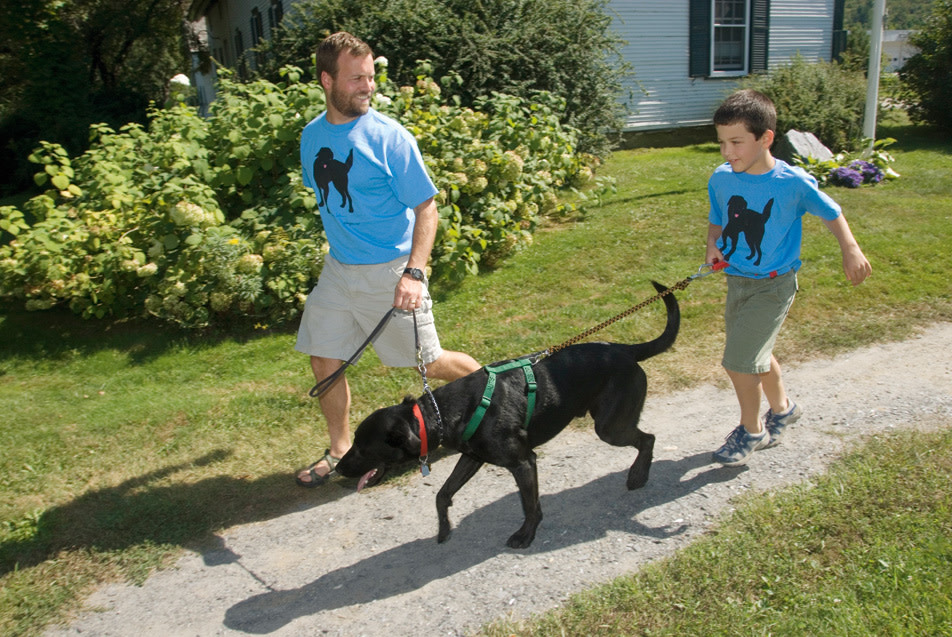Rex Rx

Six hundred miles seems like a helluva long way to drive to buy a dog. Especially when it’s the uninspiring 600 miles of Interstate 5 between Colfax, California (near Sacramento), and Lake Oswego. But when that dog promises to change your family’s life, the gas money and hours of highway driving are mere trifles.
At least that’s what Tim Pitz thought in July 2004 when he made the trek to collect “Lady” from Lake Oswego’s Autism Service Dogs of America, one of only a handful of organizations in the country that trains pups solely to help autistic children.
“When we got Lady, Riley was completely nonverbal,” says Niccole Pitz of her autistic son, who was 5 years old at the time. “He didn’t make eye contact, ask for help or even call us Mom and Dad.”
Dogs have been used to help the blind and deaf since the 1930s, but it was only in 1996 that a Canadian organization pioneered the use of dogs to help autistic children. The animals calm children on the verge of tantrums—a common response to stress—by nudging them or even lying on their feet. They also help control “runners”—children who bolt—because it’s pretty tough to flee when you’re tethered to a 65-pound golden retriever.
Such positive results have motivated local groups, such as Keizer’s The Joys of Living Assistance Dogs, to begin training a few autism dogs a year. Dog trainer Pris Taylor founded Autism Service Dogs of America in 2002 after working as a substitute special education teacher. Taylor has since placed 14 dogs across the country, and last month placed her first one in Oregon, where the rate of autism is much higher than in the rest of the United States: 1 in 98 children are affected by it here, compared to 1 in 150 nationally. “Autistic children are isolated in their own little world,” Taylor says. “That dog is their first—and sometimes only—friend.”
But such empathetic friends don’t come cheap. The average price for a four-legged friend from Taylor is $13,500. (Taylor encourages fundraising to help with the cost.) Part of the high price comes from paying up to $1,000 for a purebred golden retriever or lab—preferred for their size, longevity and good temperament. (Of course, there are exceptions—one dog was returned to Taylor because it showed aggressive tendencies.) Then add at least a year of specialized training, care and vet bills, and the dollars begin to pile up.
For the Pitz family, it’s been a worthwhile investment: Before Lady came along, Riley would regularly run away as soon as the front door opened. Now, the 5-year-old golden retriever keeps him anchored, literally. And even if he does manage to flee, Lady is right behind him, playing her own loving game of fetch.




